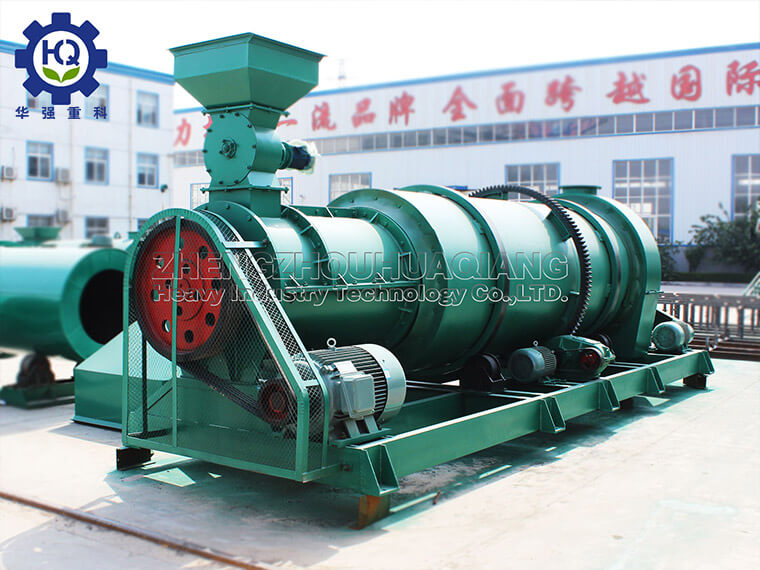The speed regulation of fertilizer granulator is one of the key factors to improve granulation efficiency and particle quality. The correct speed setting can optimize the granulation process, but too low or too high a speed can affect the granulation effect. Here is a guide on how to improve granulation efficiency by adjusting the speed of the granulator:
Understand the relationship between rotational speed and granulation efficiency:
When the speed is low, the mixing and rolling effect of materials inside the fertilizer granulator is poor, which may lead to slow particle formation and low granulation efficiency.
When the rotation speed is high, although it can accelerate the rolling and mixing of materials, excessive rotation speed may lead to increased wear between particles, affecting the integrity and strength of particles, and increasing the energy consumption and wear of equipment.

Determine the optimal speed range:
Determine the optimal speed range suitable for specific material characteristics and production needs through experiments or reference to equipment manufacturers' recommendations. This usually requires consideration of factors such as material particle size, humidity, and adhesion.
Some granulators, such as drum granulators, may have an optimal speed between 60% and 70% of the critical speed, which helps the material form the best parabolic motion inside the granulator and promotes particle formation.
Gradual adjustment:
During the production process, the speed of the granulator can be gradually adjusted to observe changes in particle quality and production efficiency. By fine-tuning the speed, find the speed point that can improve granulation efficiency without affecting particle quality.
When adjusting, it is recommended to only increase or decrease the speed by a certain proportion each time to avoid significant changes that may have adverse effects on the granulation process.
Monitoring and feedback:
Real time monitoring of the operating status of the fertilizer granulator using sensors and monitoring systems, including parameters such as speed, temperature, pressure, as well as quality indicators such as particle shape, size, and density.
Adjust the speed in a timely manner based on monitoring data and production requirements to maintain the stability and efficiency of the granulation process.
Consider changes in material characteristics:
The characteristics of materials, such as humidity and particle size, may change during the production process. Therefore, the adjustment of speed should take into account these changes to adapt to different batches or types of raw materials.
Regular calibration and maintenance:
Regularly inspect and calibrate the speed control device of the granulator to ensure its accuracy and reliability.
Regularly maintain the granulator, inspect and replace worn parts to avoid unstable speed caused by equipment failure.
Through the above methods, the speed of the granulator can be effectively adjusted to improve granulation efficiency and particle quality, while reducing energy consumption and equipment wear, achieving optimization of the production process. During the adjustment process, it is recommended to collaborate with equipment suppliers or industry experts to obtain more professional guidance and advice.